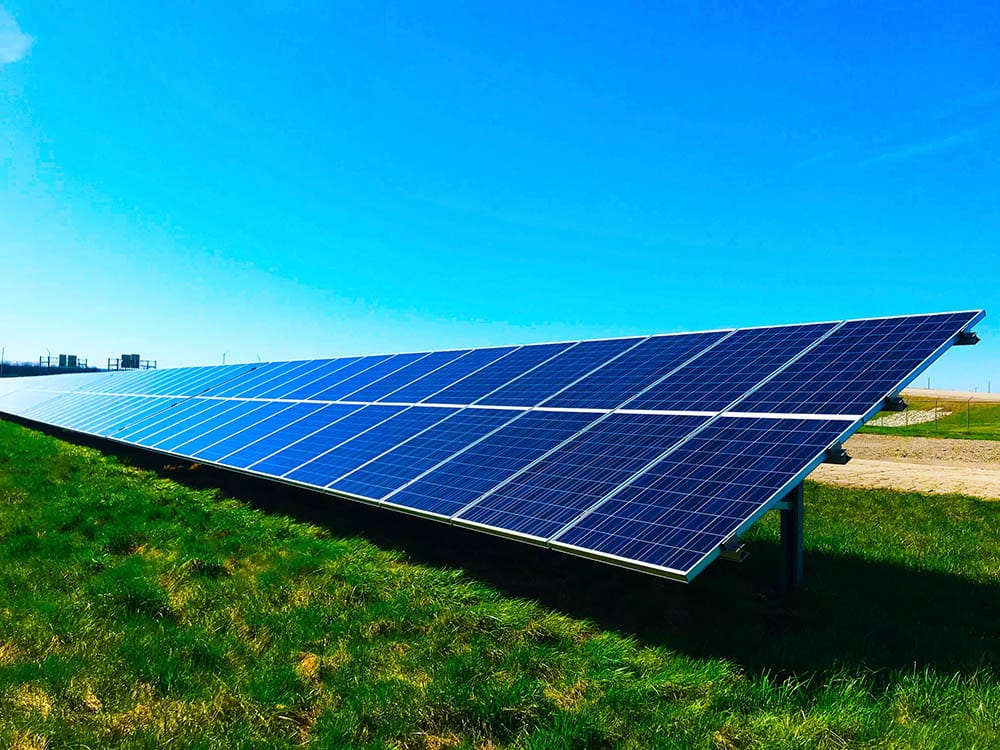Are Solar Panels Recyclable? Can You Reuse Them?
-
Pete Ortiz
- Last updated:

Solar panels are known for being a clean source of energy. But the ironic thing is that one day, they’ll also become waste because their use life will be over or they will simply need to be replaced. Luckily, solar panels are mostly made out of glass, plastic, aluminum, and silicon, which are all recyclable materials.
Due to their popularity as an alternate source of clean energy, many people around the world have begun to use solar panels to fuel their everyday lives. Especially over the last 10 years, the world has seen constantly increasing demand for solar energy and, by extension, more and more solar panels are produced every year. One day, all of those solar panels will likely need to be recycled, but how does it work? And Is there enough infrastructure to recycle all of them?
Understanding the Statistics
In 2019, 629 gigawatts of electricity were produced via solar energy. Considering that a single solar panel can only produce about 250 watts, that estimates to about 2.5 billion solar panels in existence, each one weighing around 50 pounds. The total weight of every solar panel in the world is around 125 billion pounds—that’s a lot!
It is estimated that the average lifespan of a solar panel is anywhere from 25 to 30 years. Since mass adoption of solar panels began only about 10 years ago, there are about 15 to 20 years remaining in most people’s panels. It is estimated that a panel’s efficiency decreases around 10% in the first 10 years and around 20% in the first 20 years. But in reality, it seems that after 20 years, efficiency only goes down around 6%-8%.
This suggests that a solar panel can actually last from 30 to 40 years, and with some luck, a little longer. The disadvantage, of course, is diminishing efficiency. Slowly but surely, scientists are learning more about solar panels in the long term and how to stretch their usage out as long as possible.
In 2017, there were only approximately 43.5 tons of solar panel waste. In contrast, estimates predict that by 2050, there will be approximately 60 million tons of solar panel waste that will be recycled annually. Some experts even predict that, by then, more than $15 billion will be made in recoverable assets from these goods.

Structure of a Solar Panel
Solar panels are frame-like rectangles, with dozens of small squares. Inside these squares, there are metal combinations made out of silicon called wafers. The wafers are mostly made out of silicon, but to create a magnetic field there are also small amounts of aluminum and other metals. Solar panels also have some internal wiring, but this general structure is replicated throughout the whole panel. Finally, the panel is covered with a glass top.
How The Recycling Process Works
When silicon-based solar panels stop working, they are dismantled and separated into their pure materials. Over 95% of the glass is reused and 100% of the aluminum is recovered as well. After that, the unrecoverable parts go through thermal processing at over 500ºC, during which time the leftover plastic coating will evaporate and be used as a fuel for the next thermal process.
After this step, the cell modules are separated. Over 80% are recoverable and can be reused for new panels, the silicon wafers inside the cells are etched with acid, over 85% of the silicon can be reused and the broken wafers are melted.
As for thin-film solar panels, when it comes to recycling, the first step is to shred them. Then, the solid and liquid components are separated with the help of a rotating screw. Plastic film is again dissolved using acid and hydrogen peroxide. The inner layer of metal is removed through vibration. After this, the remaining glass is rinsed and over 90% of it is recoverable. The remaining semiconductor metals are precipitated and dewatered, finally, they are separated and over 95% of them can be recovered for newer projects.
If this process of solar panel recycling didn’t exist, approximately by 2050, 60 million tons of solar panels would end up in landfills every year, which would be terrible for the environment.

Looking Forward
The future seems likely to have many more solar panels in the coming years. That means more plastic, more glass, more silicon, and more materials will be needed.
If the recycling of these panels is properly and sufficiently done, these materials can go directly back into newer panels, thus dramatically reducing the amount of new materials that will be needed for new panels. It is predicted that by 2050, knowing how to recycle solar panels and properly carrying it out can help make up to two billion new solar panels with older materials, thus helping produce 630 gigawatts of electricity—which is more than the current global total of around 580 gigawatts!
Solar panel manufacturers are also heavily regulated by governments to make sure they don’t pose a big threat to their environment. Due to the novelty of this whole industry, many things are still quite unknown, for example, there is no exact category for solar panels as a recyclable material as of yet. The exception to this is in the European Union, where it is specified to be “e-waste”.
Recycling Measures
Due to the fact that disposing of solar panels is something new, governments have started to collaborate with panel manufacturers to set some guidelines in regards to how to deal with recycling and its objectives.
- In Europe, the law requires companies to recycle their solar panels at the end of their use life, thus companies will have to heavily invest in that going into the future. In the US no such measures exist, meaning anyone can just throw their solar panels in a landfill without penalty.
- The panels can be salvaged using chemical or manual processes.
- Both types of solar panels in existence can be recycled using industrial processes, with around a 96% efficiency.
- The materials that are recovered can be used to make even more solar panels.
- Solar panel recycling could also open new job opportunities.
- Solar Panels will be known for being “double green,” as they provide clean sustainable energy and, when their use life is over, they aren’t a large burden on the environment.

Is It Enough?
Another question we should probably ask ourselves when considering recycling is whether there is enough infrastructure to support future demand. It is already quite clear that the industry will keep growing, bringing tremendous economic, social, and environmental opportunities with it.
Is there enough infrastructure to sustain recycling so many solar panels? As of this moment, no. The entire future of the industry depends on more efficient methods being found and easily implemented because in the present moment it requires quite a lot of work to recycle just a few tons a year. But as the solar panel industry grows, so will the need for recycling plants for the panels, and hopefully, there can be enough so that no solar panels end up in landfills where they just pollute.
Conclusion
Now that you’ve learned all of the benefits of recycling your solar panels, if yours need to be replaced, you should contact the company from whom you purchased them and ask about their recommended recycling procedure, so you avoid having them end up in a landfill.
Featured Image Credit: Chelsea, Unsplash
Contents


